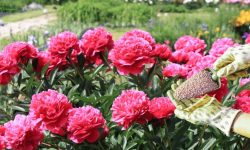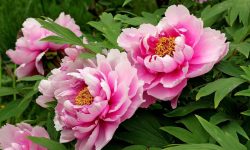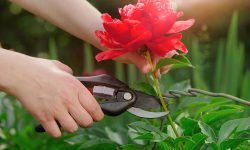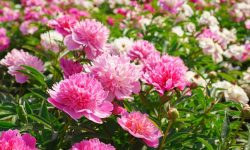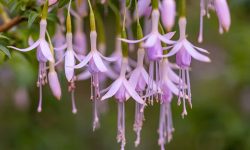Understanding Geranium Growth and Blooming Cycles
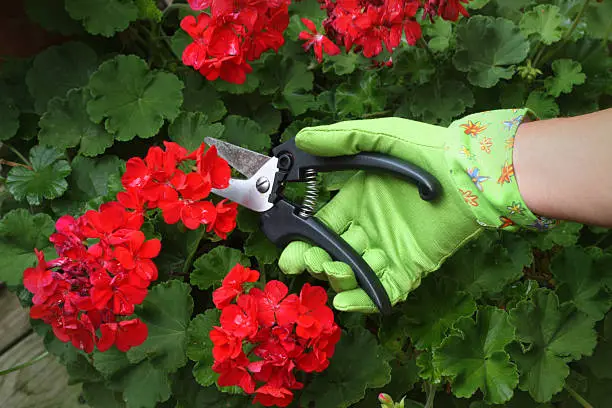
Geraniums have distinct growth and blooming cycles that are important to understand for effective pruning. Typically, these plants experience their most vigorous growth in spring and early summer, producing abundant foliage and vibrant flowers. During this active phase, geraniums focus energy on both leaf development and flower production, making it the ideal time to prune for encouraging fuller growth and more blooms.
As the season progresses into late summer and fall, geraniums begin to slow down their growth and gradually reduce flowering. This natural cycle prepares the plant for dormancy or a rest period, especially in cooler climates. Understanding these phases helps gardeners time pruning correctly, ensuring cuts stimulate new growth without removing too many buds that could affect blooming. By aligning pruning with the plant’s natural rhythms, you support healthier, more resilient geraniums that reward you with continuous color year after year.
Pruning at the right stage in the growth cycle also helps manage the plant’s shape and size, preventing legginess and encouraging bushier, more compact growth. When geraniums are pruned during their active growth, they respond by producing multiple new shoots, which leads to denser foliage and a greater number of flower clusters. Conversely, pruning too late in the season can reduce blooming potential and leave the plant vulnerable to stress. By understanding and working with geraniums’ natural growth and blooming patterns, you can maximize their beauty and longevity in your garden or containers.
Why Pruning Geraniums Matters
When to Prune Geraniums for Best Results
Choosing the right time to prune your geraniums is crucial for maximizing their health and flowering potential. The most effective pruning typically occurs in early spring, just as new growth begins to emerge. At this stage, cutting back old, leggy stems encourages vigorous new shoots and sets the stage for a vibrant blooming season. Pruning too early in late winter can expose plants to frost damage. Waiting too long into the growing season may reduce the number of flowers produced.
In addition to spring pruning, regular maintenance pruning throughout the growing season helps sustain plant shape and promotes continuous blooming. This includes removing spent flowers (deadheading) and trimming back any overgrown or unruly branches. For geraniums grown indoors or in mild climates, light pruning can be done year-round to keep the plant tidy and encourage fresh growth. Conversely, in colder climates, it’s important to prune before bringing plants indoors for winter to reduce pest problems and prepare them for dormancy. Understanding the timing and purpose of each pruning session ensures your geraniums remain healthy and floriferous all year long.
Tools Needed for Pruning Geraniums
Having the right tools is essential for effective and safe pruning of geraniums. A pair of sharp, clean pruning shears is the most important tool, as it allows you to make precise cuts that minimize damage to the plant. Dull or dirty blades can crush stems, increasing the risk of disease and slowing down healing. For smaller or delicate stems, a pair of fine-tip scissors or garden snips can be helpful to ensure accuracy.
In addition to cutting tools, it’s wise to have rubbing alcohol or a disinfectant on hand to sterilize your shears before and after pruning. This helps prevent the spread of pests and diseases between plants. Gloves are also recommended to protect your hands from scratches and possible skin irritation caused by sap or thorns. For geraniums growing in containers or hard-to-reach spots, a small hand rake or brush can help clean debris around the base. This promotes a healthier growing environment. Using the right tools not only improves pruning results but also keeps your plants and garden safe.
Step-by-Step Guide to Pruning Geraniums
Remove Dead, Diseased, or Damaged Stems
Start by carefully inspecting your geranium for any dead, yellowing, or diseased stems. These stems can harbor pests and diseases that spread quickly. Always use clean, sharp pruning shears to prevent further damage. Cut stems as close to the base as possible to remove all affected tissue. Removing unhealthy growth improves air circulation inside the plant, lowering fungal disease risks. This step also helps redirect nutrients to healthy parts, promoting vibrant new growth and flowers. It’s essential to do this before heavy pruning or the blooming season for the best results.
Cut Back Leggy or Overgrown Growth
Geraniums often develop leggy growth if left unpruned for too long. These stems are long, bare, with leaves and flowers clustered only at the tips. Cutting back to just above a healthy leaf node encourages multiple new shoots to form. This creates a fuller, bushier plant with more branches and flowers. Make angled cuts to help water run off and prevent rot. Trimming leggy stems improves plant shape and lets light and air reach inner leaves better. Overall, this enhances plant health and flower production.
Pinch or Deadhead Spent Flowers
Regularly remove faded or wilted flowers by pinching or cutting above the first set of healthy leaves. This stops the plant from producing seeds and encourages more blooms. Deadheading extends the flowering season and keeps the plant neat and attractive. It also reduces the chance of fungal infections caused by decaying flowers. Make deadheading part of your weekly routine during peak bloom for best results. This simple practice helps maintain vigorous flower and leaf growth.
Perform Hard Pruning in Early Spring
Older or neglected geraniums benefit from a hard prune in early spring before new growth begins. Cut back one-third to one-half of the plant’s total size, focusing on old, woody stems. This encourages fresh, strong growth and more flower clusters. Removing damaged or weak stems resets the plant’s structure for better shape. After pruning, provide consistent watering, balanced fertilizer, and bright light to help recovery. Hard pruning can dramatically increase bloom quantity and improve plant longevity. This method is key for maintaining healthy, lush geraniums year after year.
Pruning Techniques for Different Geranium Types
Zonal Geraniums
Zonal geraniums are the most commonly grown type. They respond very well to hard pruning after the flowering season. Cutting back old and weak stems encourages new shoots and flower buds. This helps maintain their classic compact and rounded shape. Without pruning, zonal geraniums tend to become leggy and sparse. Removing faded flowers and trimming stems near the base redirects energy to healthy growth. Regular pruning keeps the plant vigorous and supports a longer blooming period. It also prevents diseases by improving air circulation inside the plant. For best results, prune zonal geraniums at the end of their blooming cycle or early spring before new growth starts.
Ivy Geraniums
Ivy geraniums have trailing stems that can grow long and unruly if left unchecked. Selective pruning is necessary to control their length and overall shape. Pinching or cutting back long runners encourages the plant to produce more side branches. This creates a fuller, bushier appearance and avoids straggly growth. When pruning, cut just above a leaf node to stimulate new shoots from that point. Ivy geraniums benefit from regular trimming throughout the growing season to maintain their lush, cascading habit. Pruning also increases air flow through the foliage, reducing risks of fungal infections. These geraniums do well in hanging baskets or containers where shape and size need regular management.
Scented-Leaf Geraniums
Scented-leaf geraniums are primarily valued for their aromatic foliage rather than their flowers. Pruning for this type should be gentle and precise to protect the fragrance. Light trimming after flowering helps keep the plant tidy and encourages healthy leaf growth. Avoid heavy pruning, which can reduce leaf density and weaken the plant’s scent production. Removing any dead or yellowing leaves promotes better air circulation and overall health. Regularly trimming also helps maintain a pleasing shape without sacrificing the leaf aroma. For scented geraniums, pruning is more about shaping and sustaining vitality than stimulating heavy flowering.
How to Care for Geraniums After Pruning
After pruning, geraniums need proper care to recover quickly and thrive. Water the plants immediately but avoid waterlogging the soil. Keep the soil consistently moist but not soggy for the first few weeks. This encourages strong root development and reduces transplant shock.
Place pruned geraniums in bright, indirect sunlight to promote healthy new growth. Avoid harsh, direct afternoon sun that can stress tender shoots. If growing indoors, position plants near a south- or west-facing window for optimal light.
Fertilize lightly about two weeks after pruning with a balanced, water-soluble fertilizer. Use half the recommended strength to prevent fertilizer burn. Regular feeding supports vigorous leaf and flower development during recovery.
Remove any dead or yellowing leaves promptly to prevent disease. Good airflow around the plants reduces fungal risks, especially after pruning when wounds are fresh. Avoid overhead watering to keep foliage dry.
Monitor for pests such as aphids or spider mites, which may attack weakened plants. Treat infestations early with insecticidal soap or neem oil. Healthy post-pruning care maximizes bloom production and plant longevity.
Common Mistakes to Avoid When Pruning Geraniums
Pruning at the Wrong Time
Timing is critical when pruning geraniums. Pruning too early, especially in late winter or before the last frost, exposes tender new growth to cold damage. This can lead to dieback and weak regrowth in spring. Conversely, waiting too long into the growing season before pruning reduces the plant’s ability to produce new flowering shoots. For best results, prune in early spring after the risk of frost has passed but before new growth becomes too woody.
Using Dirty or Dull Pruning Tools
Using unclean or blunt pruning tools is a frequent error. Dirty tools can transfer diseases and pests from one plant to another, while dull blades cause ragged cuts that heal slowly. Always disinfect your pruning shears with rubbing alcohol or a bleach solution before and after use. Sharpen tools regularly to ensure clean cuts that minimize damage to the stems.
Incorrect Cutting Technique
Many gardeners cut too close or too far from leaf nodes or buds, which can stress the plant. Cutting too close to the node can damage it, preventing new growth, while leaving too much stem can result in dieback. The proper technique is to make clean, angled cuts just above a healthy leaf node or bud. The angled cut allows water to drain away, reducing the risk of fungal infections and promoting faster healing.
Neglecting to Remove Dead or Diseased Stems
Failing to remove dead, damaged, or diseased stems is a major mistake that compromises plant health. These unhealthy parts harbor pathogens and pests that can spread to healthy sections. Dead or yellowing stems also block light and airflow, reducing overall vigor. Regularly inspect your geranium and prune out any compromised stems to maintain a clean, healthy plant structure.
Over-Pruning or Under-Pruning
Striking the right balance in pruning is vital. Over-pruning can shock the plant, leading to stunted growth, fewer blooms, and increased vulnerability to disease. On the other hand, under-pruning causes geraniums to become leggy, sparse, and less floriferous. Aim to remove about one-third of the plant’s growth during routine pruning. For older or neglected plants, a more severe hard prune in early spring may be necessary to rejuvenate them.
Forgetting to Sterilize Tools Between Cuts
Not sterilizing pruning tools between cuts can spread infections rapidly, especially when dealing with diseased stems. Use rubbing alcohol, bleach solution, or a flame sterilizer to disinfect your tools frequently during pruning. This step is crucial in preventing the transmission of fungal spores, bacteria, or viruses between plant parts.
Ignoring Aftercare Practices
Pruning is only part of the process. Neglecting post-pruning care such as watering, fertilizing, and providing adequate light can hinder recovery. After pruning, geraniums need consistent moisture, balanced nutrients, and good airflow to heal and produce new growth. Skipping aftercare increases stress and susceptibility to pests and diseases.
Pruning During Inappropriate Weather Conditions
Pruning geraniums during extreme weather can harm the plant. Pruning in very cold, frosty conditions increases the risk of tissue damage and delayed healing. Similarly, pruning during hot, dry spells can cause excessive moisture loss and stress. Choose mild, dry days in early spring or late summer when the plant is actively growing for the best results.
Overlooking Specific Needs of Geranium Varieties
Different geranium types respond best to tailored pruning methods. For example, zonal geraniums benefit from hard pruning to maintain shape, while ivy geraniums need selective trimming to control trailing growth. Scented-leaf geraniums require lighter pruning to preserve fragrant foliage. Applying a one-size-fits-all approach can reduce the plant’s flowering ability and overall health.
How Pruning Promotes Bigger Blooms
Pruning helps redirect the plant’s energy from old growth to new shoots. Removing spent flowers encourages more blooms. Cutting back leggy stems stimulates branching. This creates more flowering sites. Regular pruning improves air circulation. Better airflow reduces disease risk. Healthy plants produce larger, vibrant flowers. Pruning also balances growth, preventing overcrowding. Well-pruned geraniums receive more sunlight. Sunlight boosts photosynthesis and flower development. Overall, pruning results in fuller plants with bigger blooms. Consistent pruning is key to ongoing flowering success.
By pruning at the right time, you ensure the plant focuses its resources on producing strong stems and abundant flowers. This targeted care leads to healthier foliage and more colorful blooms. Over time, well-maintained geraniums become more resilient and bloom profusely throughout the growing season. Regular pruning also keeps the plant tidy and attractive, enhancing your garden’s overall beauty.
Seasonal Pruning Tips to Maximize Blooming
Seasonal pruning helps geraniums bloom their best all year. In early spring, perform a hard prune to remove old growth and stimulate new shoots. This refreshes the plant after winter dormancy. During summer, regularly deadhead spent flowers and trim leggy stems to encourage continuous blooming and maintain shape. Avoid heavy pruning in late fall to prevent stress before winter. Instead, focus on removing dead or damaged parts to keep the plant healthy. Adjust pruning intensity based on your local climate and growing conditions to ensure vibrant blooms each season.
Consistent seasonal pruning also improves air circulation within the plant, reducing the risk of fungal diseases. By removing overcrowded stems and old flowers, sunlight reaches more leaves, boosting photosynthesis. This leads to stronger growth and more abundant flowers. Tailoring pruning practices to each season keeps geraniums healthy and full of life, making your garden more colorful and inviting throughout the year.
Pruning Geraniums in Containers vs. Garden Beds
Pruning geraniums in containers demands more consistent and careful attention than those grown in garden beds. Containers restrict root growth and nutrient availability, which can cause plants to become root-bound or stressed more quickly. Because of this, container geraniums often grow faster but can become leggy or overcrowded, requiring frequent pruning to maintain a compact and healthy shape. Regular trimming of long stems and removal of spent flowers helps stimulate branching and prolongs blooming. Additionally, container plants may need adjustments in watering and fertilization after pruning to support new growth effectively.
In contrast, geraniums planted in garden beds have more space for roots to expand and access nutrients naturally. As a result, they generally require less frequent pruning. However, garden bed geraniums still need regular maintenance to remove dead or damaged stems, thin out crowded areas, and improve air circulation. This helps reduce the risk of disease and encourages vigorous growth. Deadheading remains essential to keep these plants blooming throughout the season.
Both container and garden bed geraniums benefit from seasonal pruning, but container plants usually respond faster due to their limited growing environment. After pruning, it is crucial to monitor container plants closely for moisture and nutrient needs, as they dry out more quickly and may require additional care. In summary, understanding the differences in pruning requirements between containers and garden beds ensures your geraniums stay healthy, lush, and full of vibrant blooms year-round.
Tips for Encouraging Bushier Growth with Pruning
How Pruning Affects Geranium Health and Longevity
Pruning geraniums plays a vital role in maintaining their overall health and extending their lifespan. Removing dead, diseased, or damaged stems prevents the spread of infections and pests, creating a cleaner environment for the plant to thrive. By cutting back old growth, pruning also improves air circulation within the foliage, reducing the risk of fungal diseases and promoting stronger, healthier stems and leaves. This upkeep helps geraniums stay vigorous and resilient throughout the growing season.
Moreover, regular pruning stimulates new growth, which keeps the plant youthful and productive. It redirects energy from maintaining old, tired stems to developing fresh shoots that support more flowers and foliage. Over time, this leads to a fuller, more robust plant capable of lasting several years with proper care. Without pruning, geraniums may become leggy, weak, and less likely to bloom well, ultimately shortening their lifespan and aesthetic appeal.
Frequently Asked Questions About Pruning Geraniums
Conclusion
Pruning geraniums is a simple but essential gardening practice that enhances both the beauty and health of your plants. By removing old growth, shaping the plant, and encouraging branching, pruning leads to bigger, brighter blooms and stronger, more vigorous growth. Whether you grow geraniums in containers or garden beds, following proper pruning techniques and timing will keep your plants thriving year after year. Embrace regular pruning as part of your garden care routine, and enjoy the stunning floral displays that follow.

